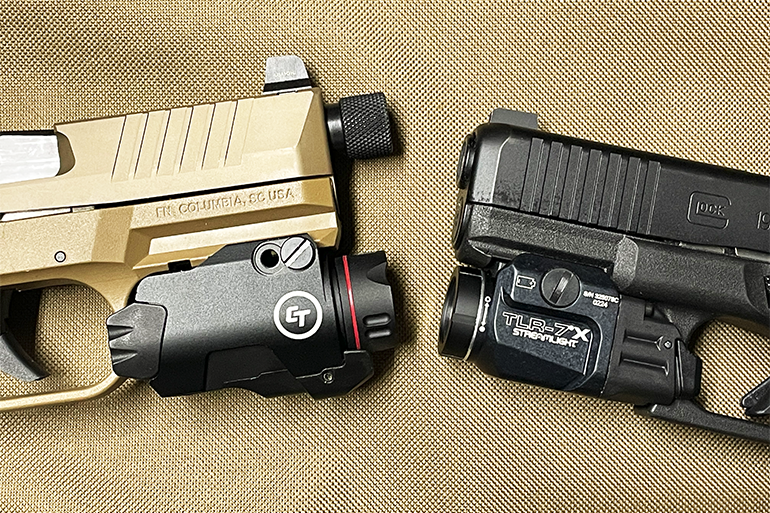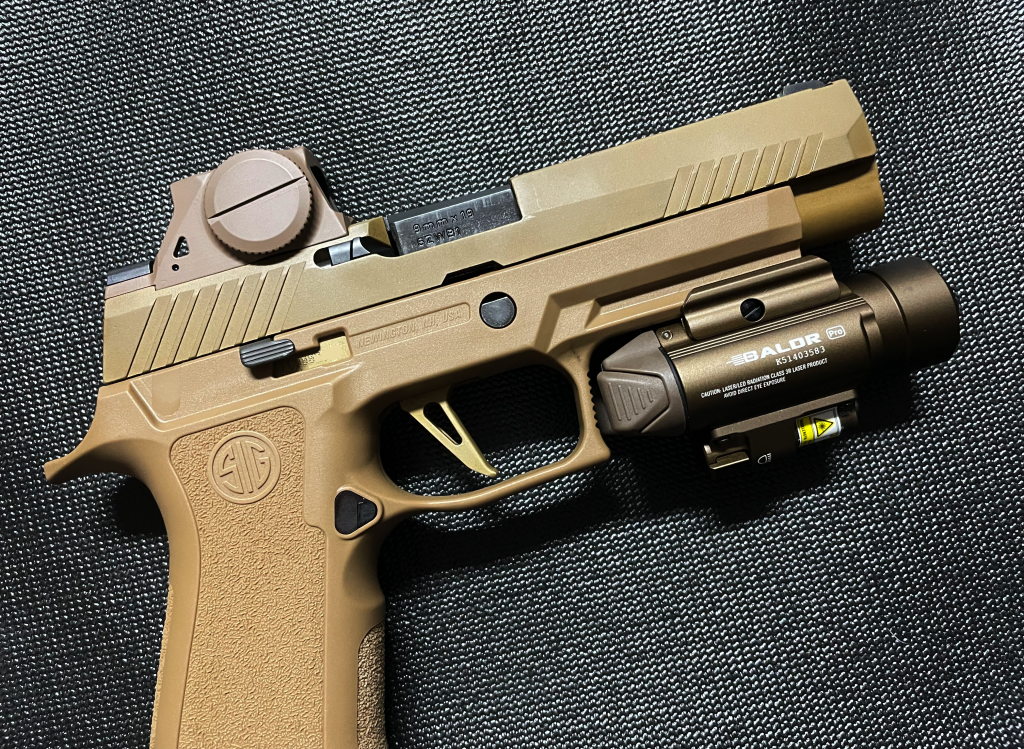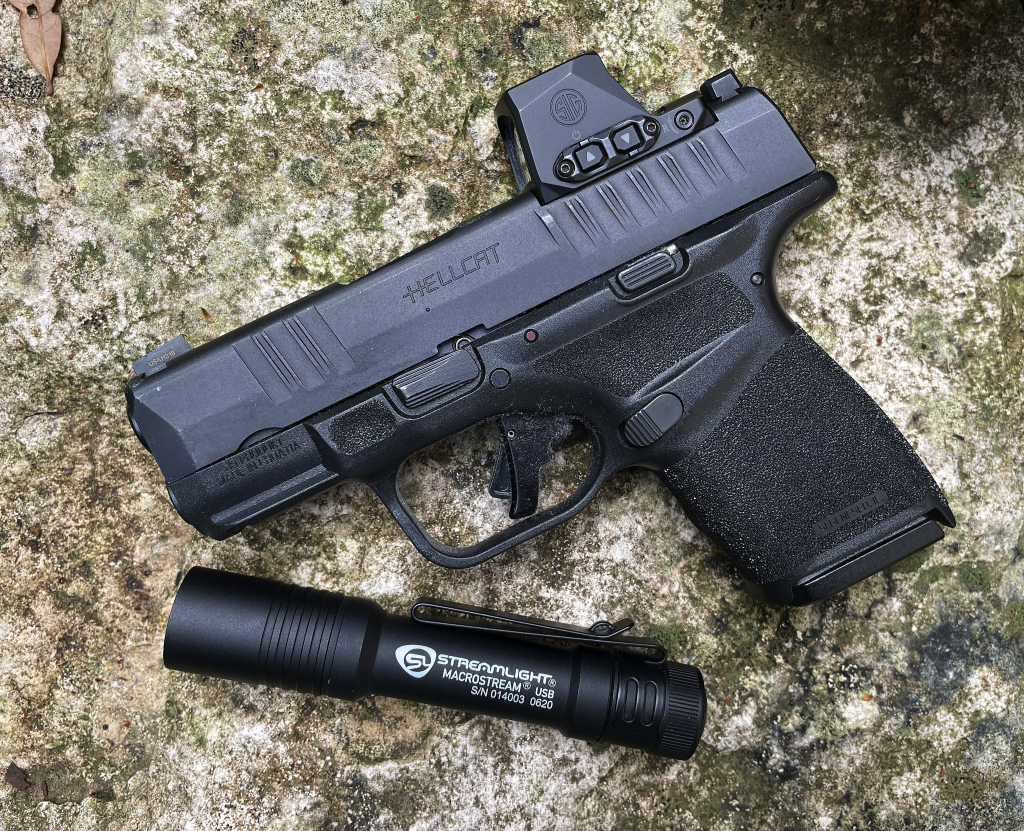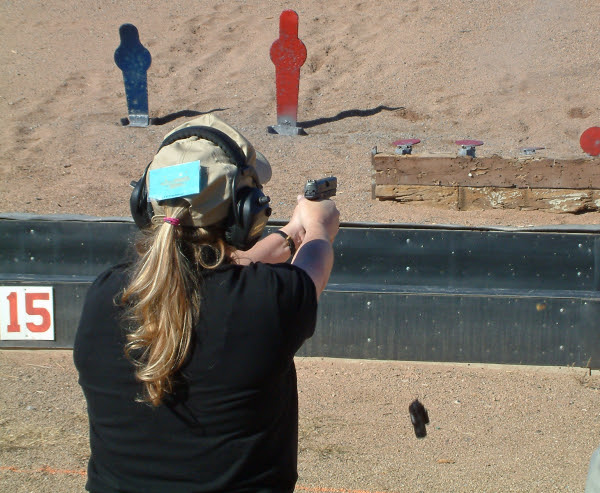
By Dave Spaulding
Most of the time I spent on patrol was on the night shift. Flashlights — what are now commonly called “handheld white lights” or “tactical illuminators” — were the size of a tail pipe and just as likely to be used as an impact weapon. I used my light in this fashion on several occasions and can honestly say such use was quite effective.
Keep in mind this was before the Graham and Garner decisions and the use of force was not yet a “seizure” under the 4th Amendment. I only bring this up to show I have extensive experience with flashlights in inconsistent light environments. It’s not just a “concept” to me.
Today the use of a flashlight as an impact weapon is a “no go” and for good reason. Thus, carrying a large, heavy flashlight is almost non-existent for cops and armed citizens alike. In reality, it’s unnecessary as light technology has advanced to the point where flashing a light in someone’s eyes can be disabling in itself…no need to hit them. However, a word of caution here — don’t rely on a flash of light to an attacker’s eyes as your only defense. It’s a momentary advantage at best.
In truth, current light technology is fantastic. I have a light the size of a lipstick tube that offers more illumination than the one I once carried on duty that was powered by four D cell batteries. That’s a good thing and it’s only going to get better.

Keep in mind, it’s not total darkness that we’re concerned with. It’s inconsistent light environments…pockets of light that mask potential threats. In today’s world, total darkness is rare in the areas where most of us live. The most likely threat is one that can be seen but is obscured by shadow. You can see it’s a person, but what do they have in their hand? Is it a weapon or a wallet?
A source of light that’s always on your person is the solution.
In the late 1990’s into the early 2000’s, I commanded a multi-jurisdictional narcotics task force that conducted its own raids, something we were doing several times a week during the crack epidemic. Heckler and Koch had introduced their USP Compact pistol, which was capable of having a white light attached to the frame.

Prior to that, pistol lights were semi-permanently mounted to the handgun with screws and brackets. That allowed task force agents to carry the gun “slick” (without the light) while concealed, but mount it when conducting a raid. The design of the light allowed users to rotate it on to the frame so the hand did not pass in front of the muzzle, in the event the light needed to be attached in the field.
I purchased the USP-C and UTL light with seized asset funds, but the gun was greeted with medium enthusiasm as some of the agents chose to carry the gun they already had. Change can be hard for some. Those who did carry the HK liked the quick on and off capability of the light.
Admittedly, one of my concerns with the new weapon system was agents using the gun/light combination as a lighting device (searching and identification) and not a firearm (shooting at an identified threat). Though I never did see any of them use the gun/light combo that way, I saw a few of them looking through drawers and closets for evidence with the gun as a light. That was quickly corrected.

Today, the pistol mounted light is common not just for tactical teams but for patrol officers and armed citizens alike. I admit to being concerned again about how these weapon-mounted lights are being used.
I had an agency trainer in one of my reduced light classes refuse to use a hand-held light for any of the training. When asked, he said he used his pistol mounted light for everything and trained his officers the same. When I asked about the muzzle being pointed at persons who weren’t a threat, he just shrugged his shoulders.
Since then, I’ve spoken with trainers and commanders across the country and it appears my concern is unfounded. Officers have been trained and understand the proper use of the weapon-mounted light. The mentioned trainer aside, it seems law enforcement and citizen trainers are doing a good job of explaining that the weapon-mounted light is a supplement to the hand-held light and not a replacement.

A hand-held light can be pointed in directions the weapon mounted light shouldn’t due to muzzle discipline, but when a serious threat arises, the weapon mounted light allows both hands to be placed on the handgun for greater accuracy, enhanced incapacitation potential and reduced liability.
Today, the weapon-mounted light is as common as automobiles and is generally being used in a tactically sound fashion. If you’re teaching to use the weapon mounted light as a search tool, stop! You are going to get your student jammed up.

Not surprisingly, the weapon-mounted light has moved to the concealed carry pistol by investigators, off-duty officers and legally armed citizens for EDC. Admittedly, this isn’t a trend I have followed as I don’t want to add more bulk to a gun I’m trying to hide.
I’ve opted to stay with my hand-held light clipped to my pocket or on my key ring, which has served me well. That said, I make it a point to tell folks to avoid the words “never” or “always” when it comes to developing combat skills or purchasing equipment.
Note that I listed developing skills first as how does one know what they need until they learn the skills required to make a proper choice. Buying before learning seldom meets with success.

If you choose to mount a light to your concealed EDC pistol, this is a good time to do so. The pistol-mounted lights on the market now are better than ever before, offering greater power, reduced size, weight and enhanced ergonomics.
One example, of which there are many, of this new generation light is the Surefire XC-1. Specifically designed to accommodate railed, compact handguns, the unit features a high-performance LED with a high lumen output while being quite small and sleek, adding little bulk to a gun intended to be hidden.
If you decide a weapon-mounted light is right for your concealed carry pistol, think about more than just the number of lumens involved or how coll it looks on your gun. Think also about how the hand interacts with the light, how easily the light goes on and off the gun and about the beam itself.
Oftentimes, a light’s beam will have a very bright center and that’s where the lumen level will be measured. I prefer a beam that’s constant in brightness even if it offers a lower lumen rating so I get the greatest field of view to look for additional threats that may just be off to one side.
Regardless of your personal feelings on the matter, compact pistol lights are here to stay and I believe it will only be a matter of time before they begin to replace the larger lights found on patrol and SWAT officer handguns. Why not? They’re just as tough, bright, sleek and just as easy to use as their larger counterparts. It’s also nice to have a gun that can go from patrol to SWAT to off-duty as adaptability is a big part of preparation.
